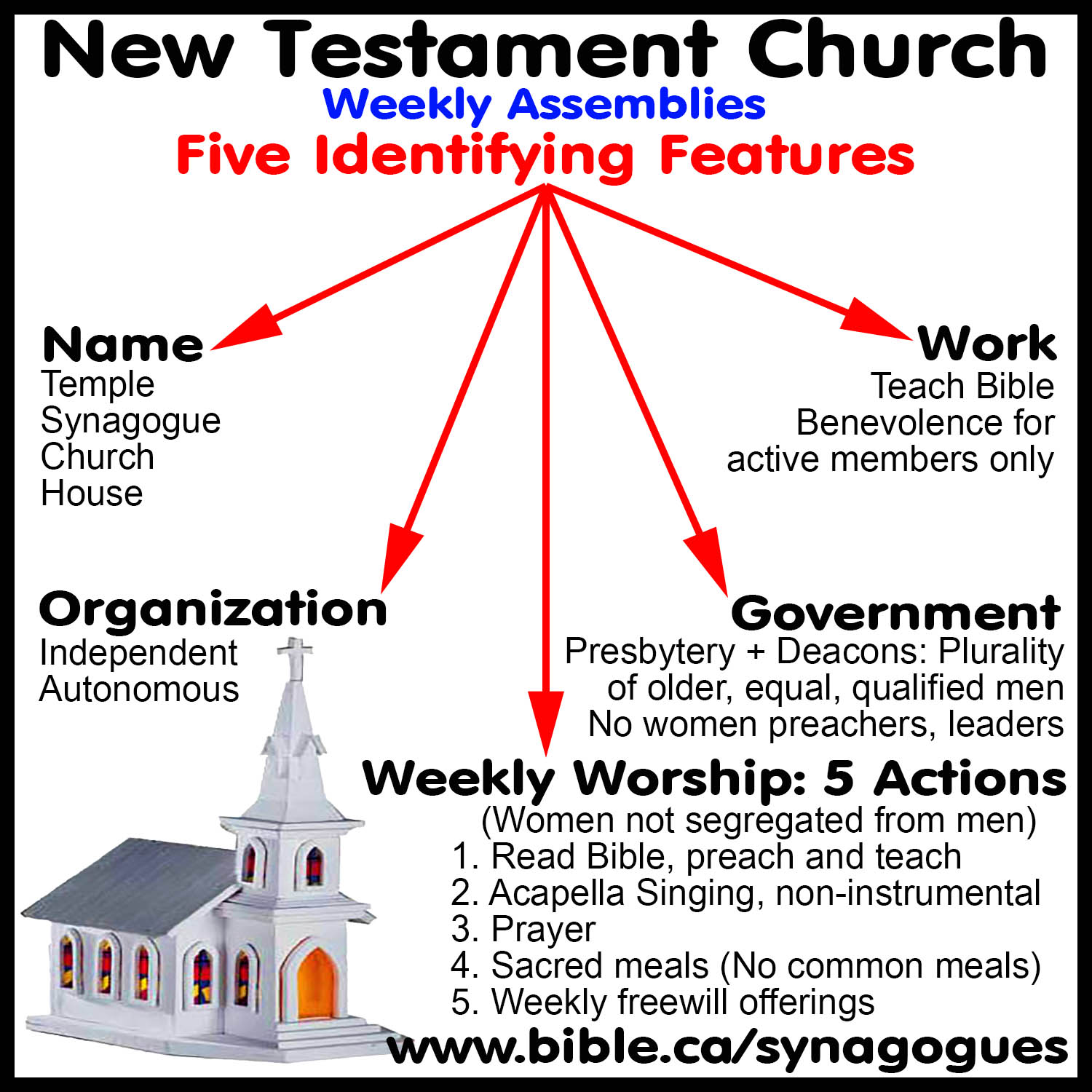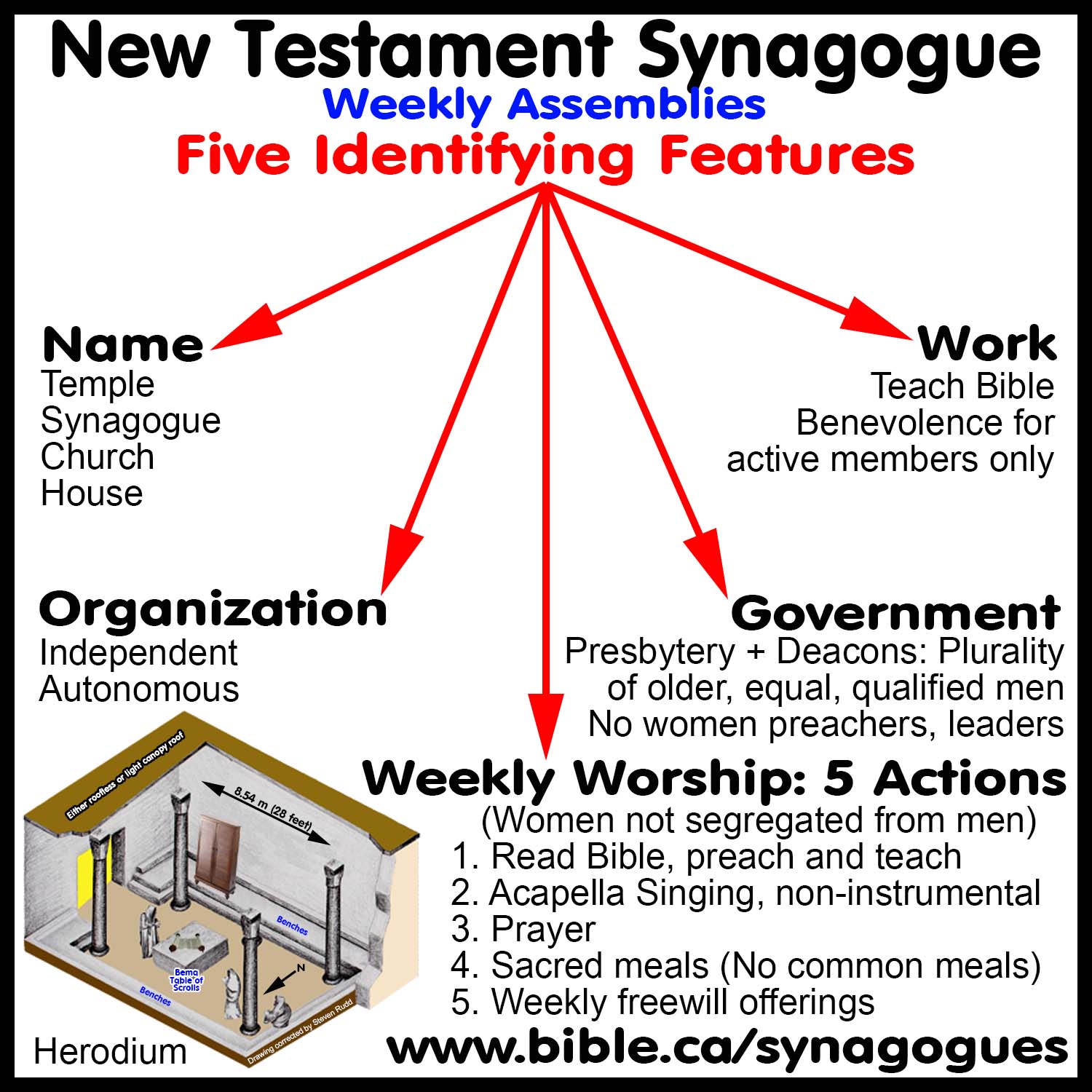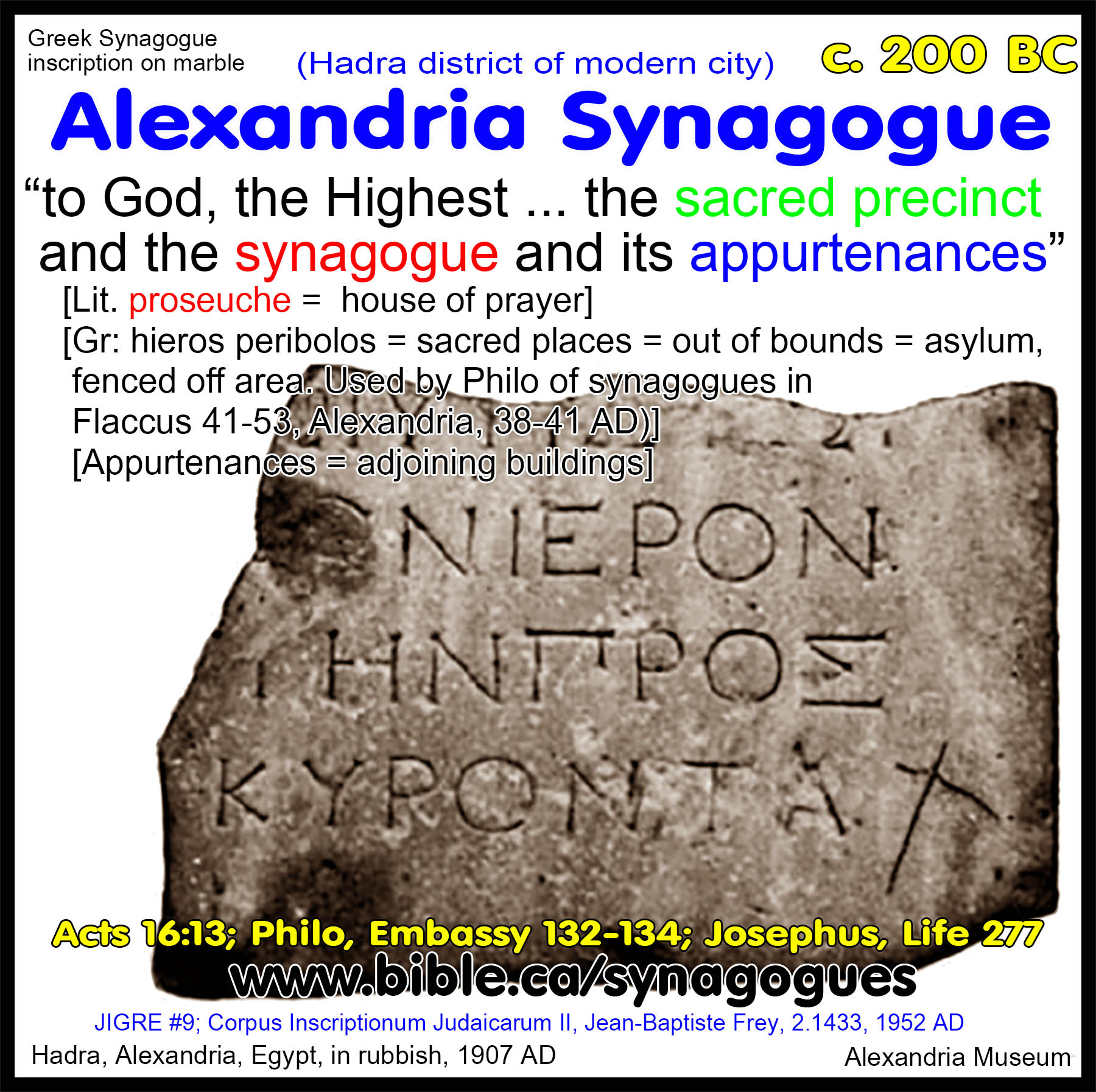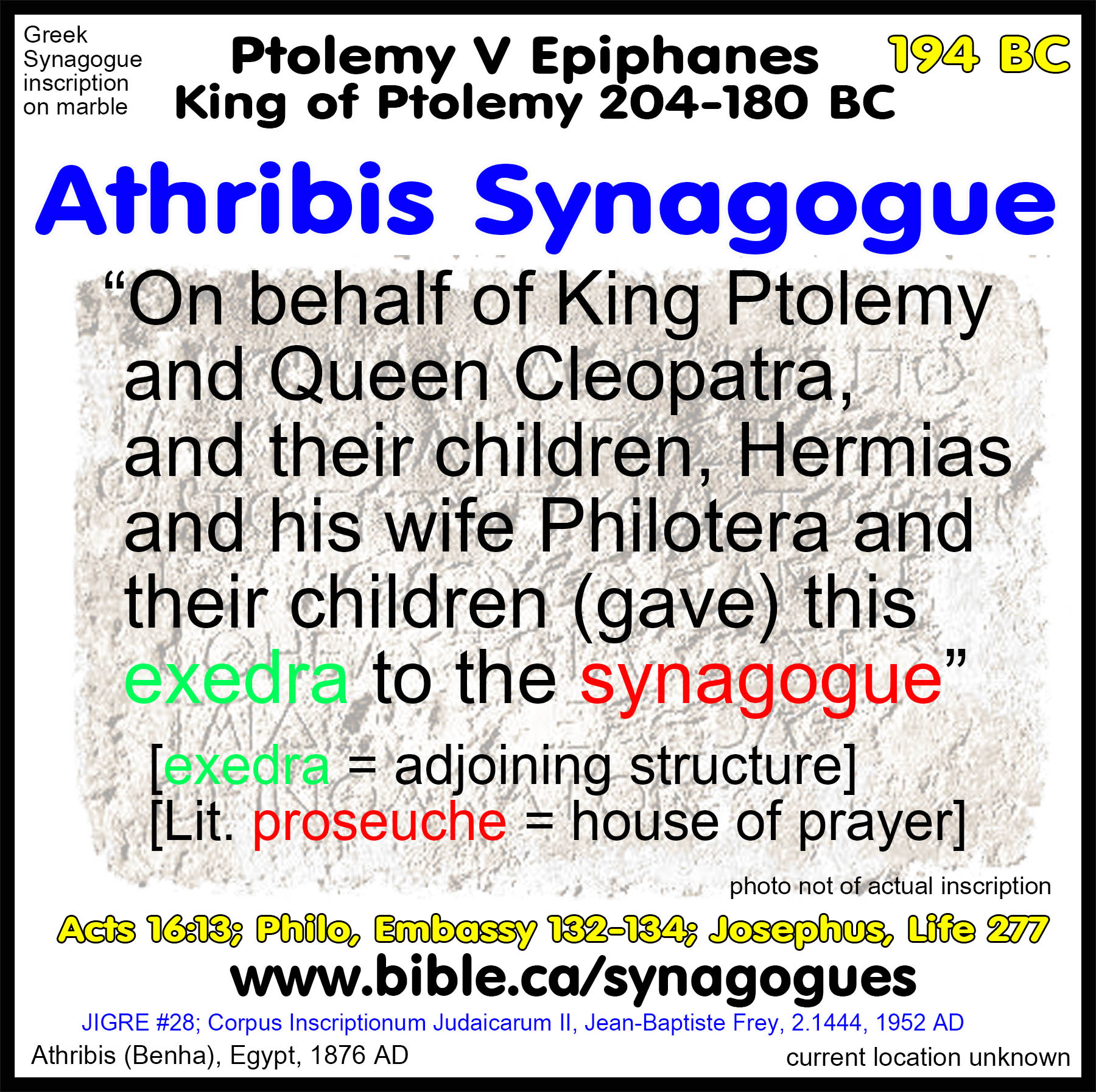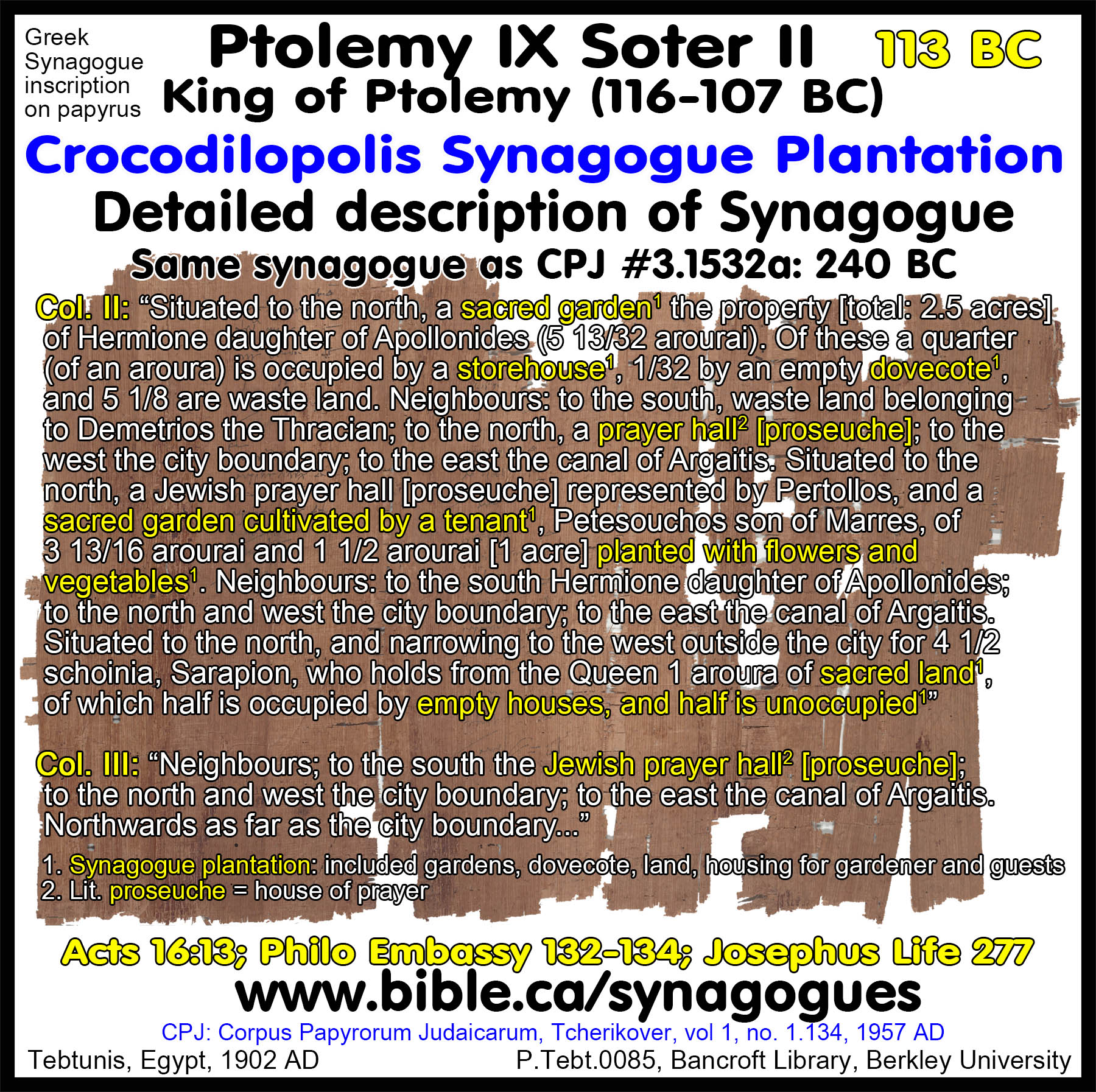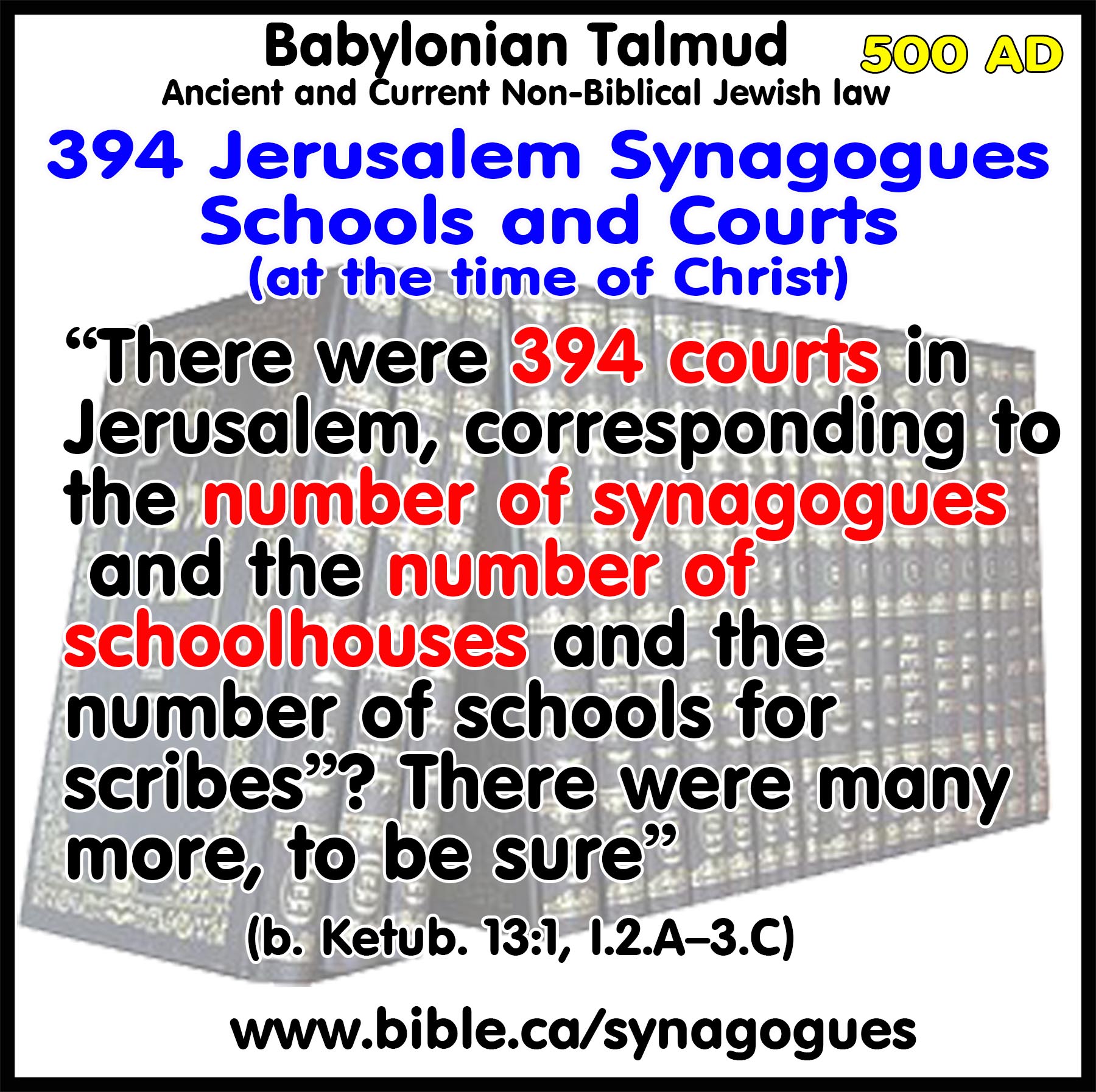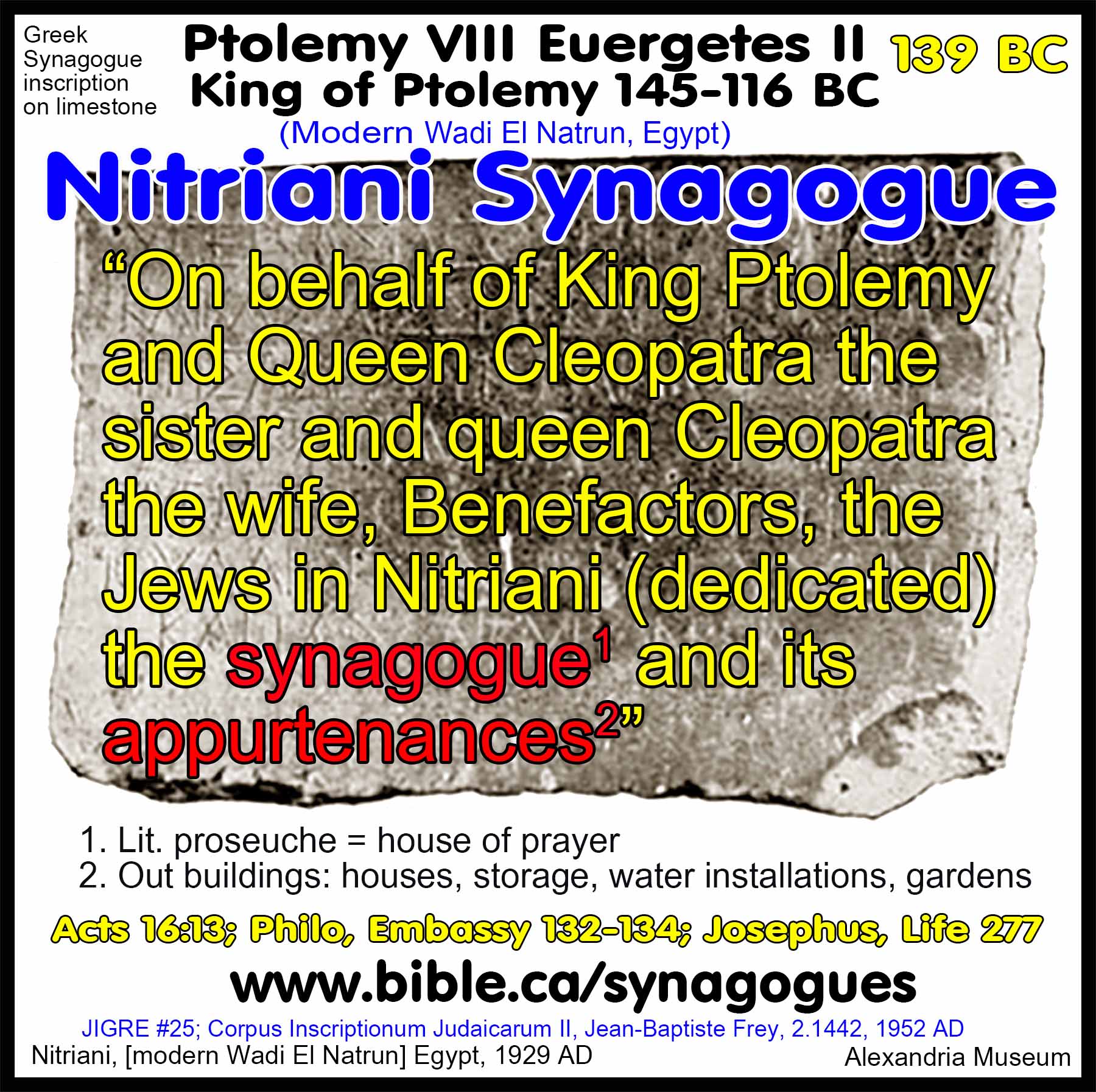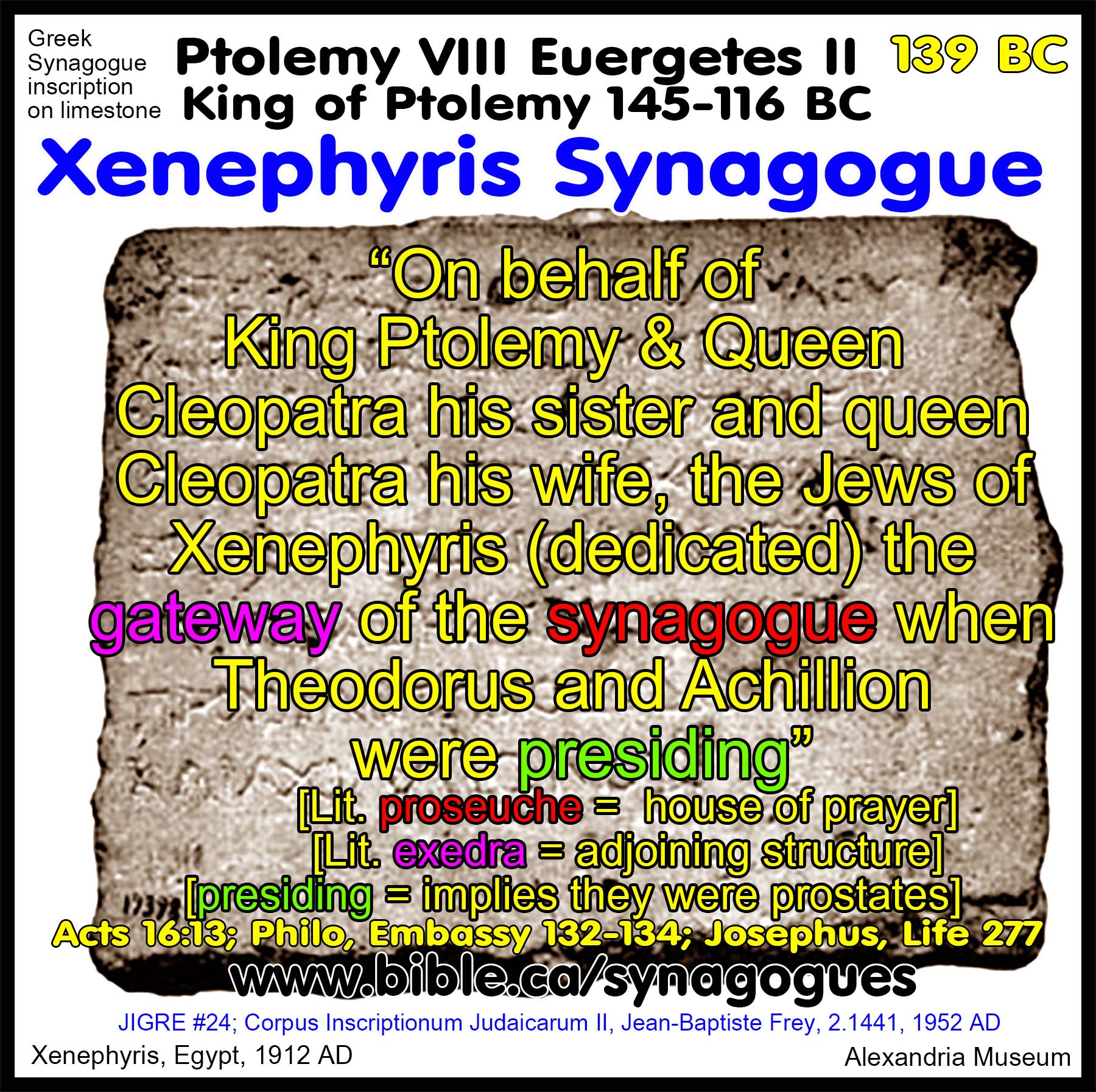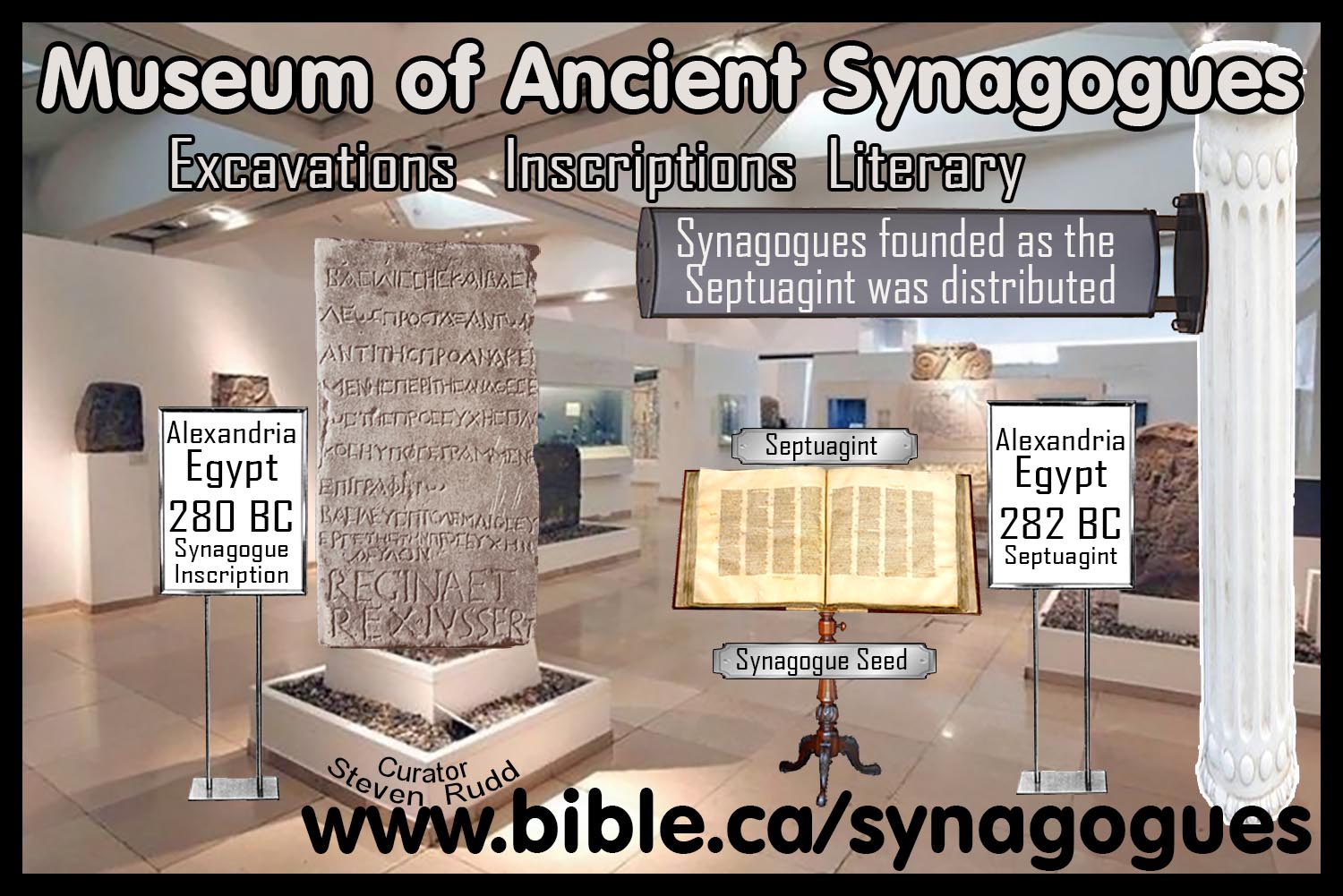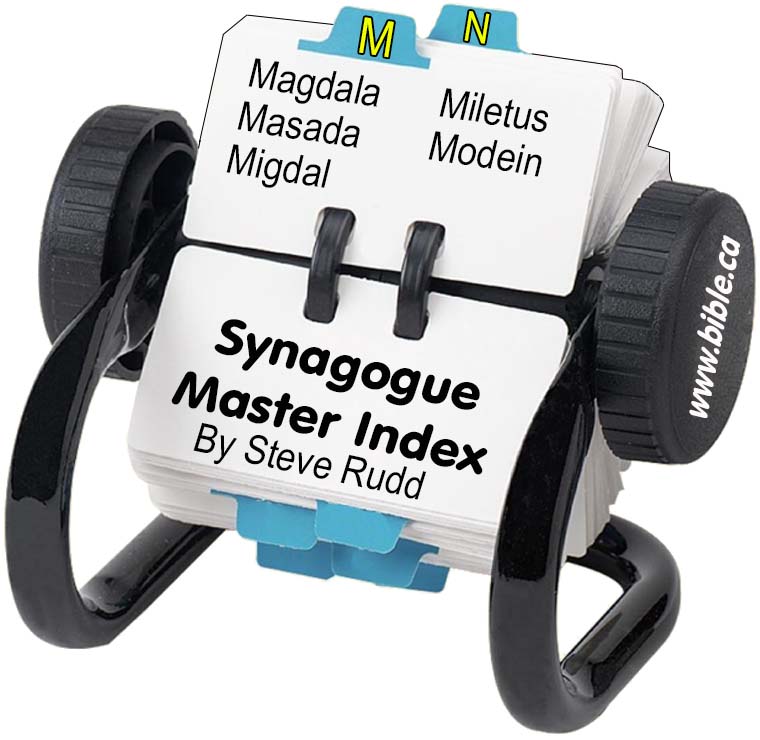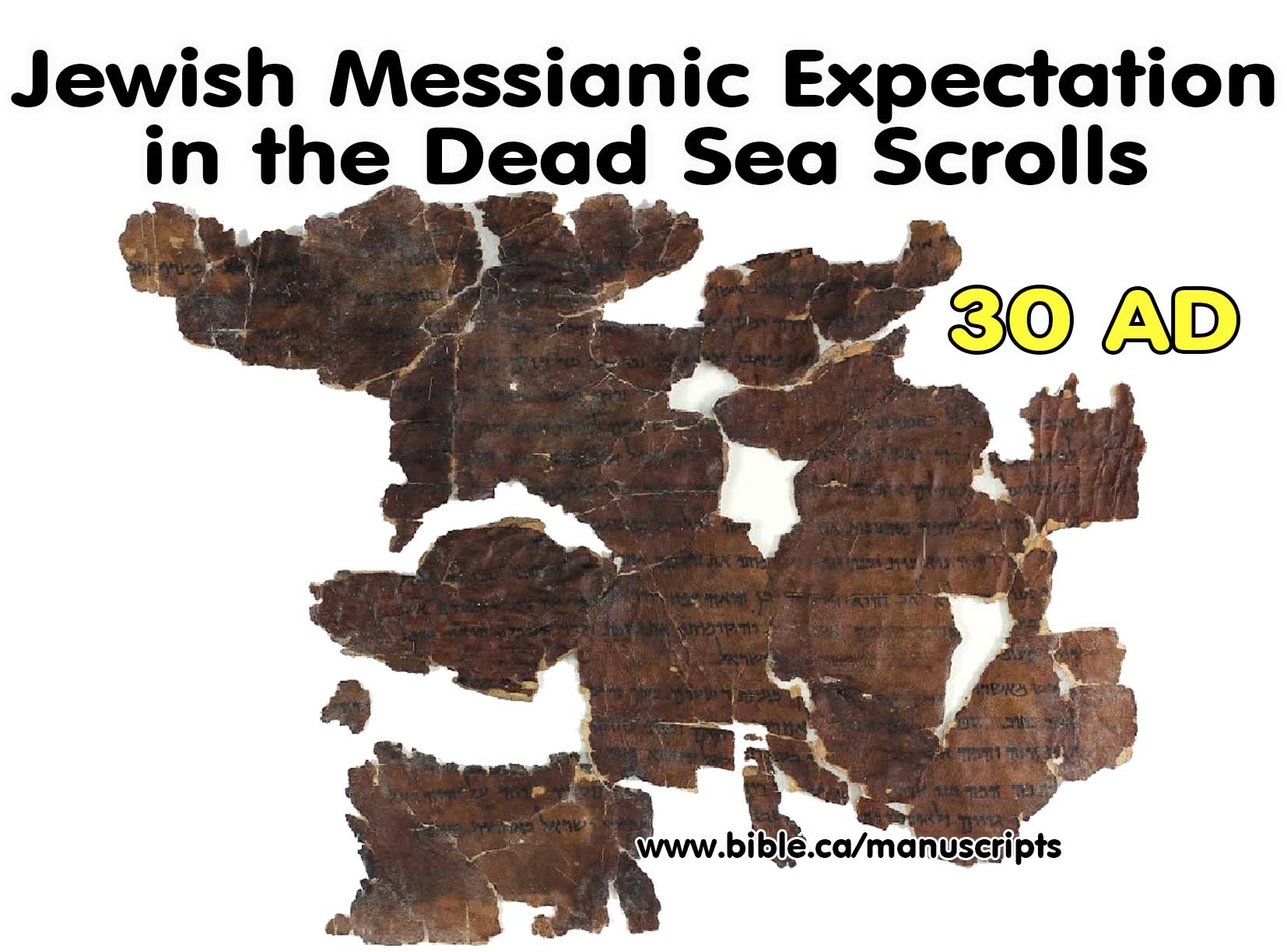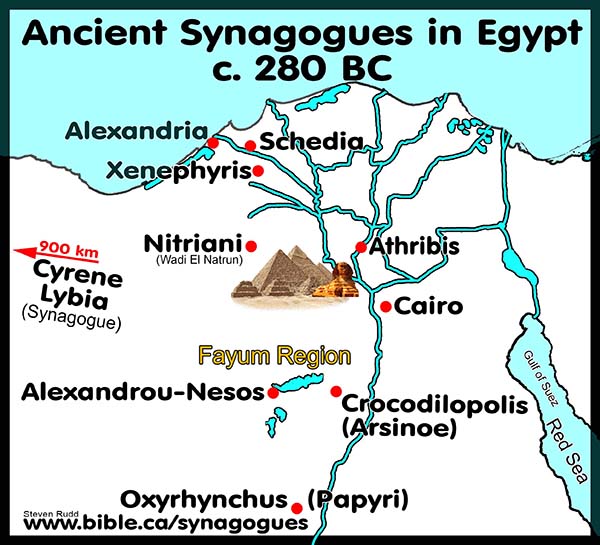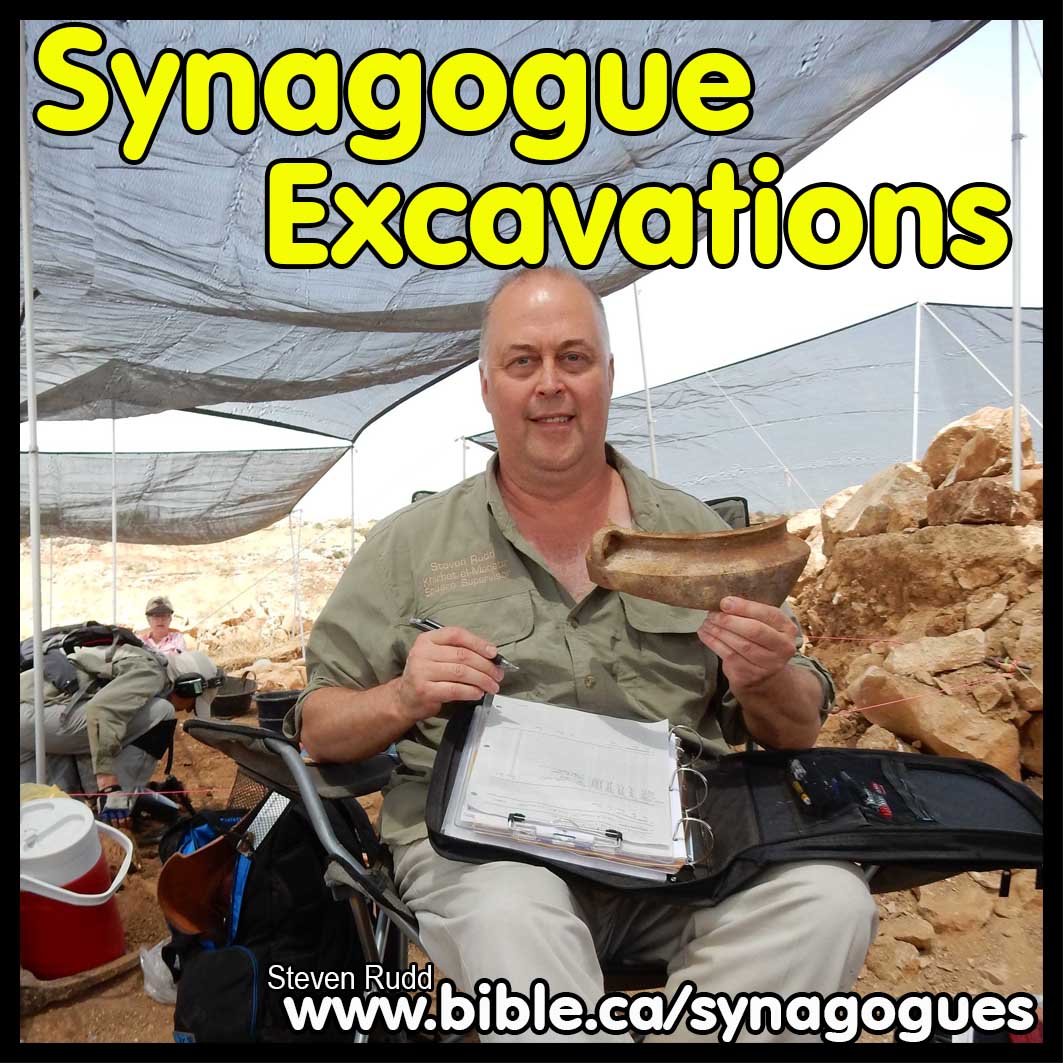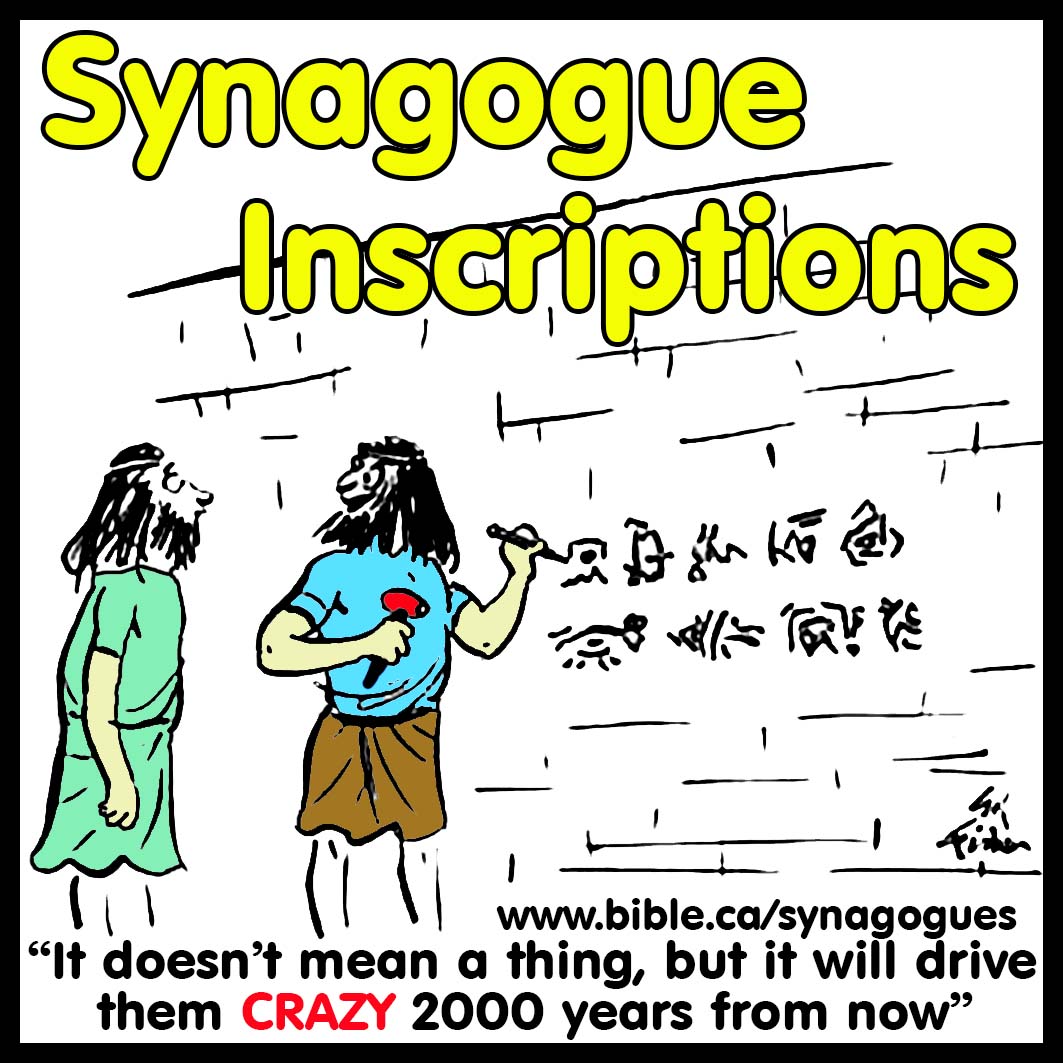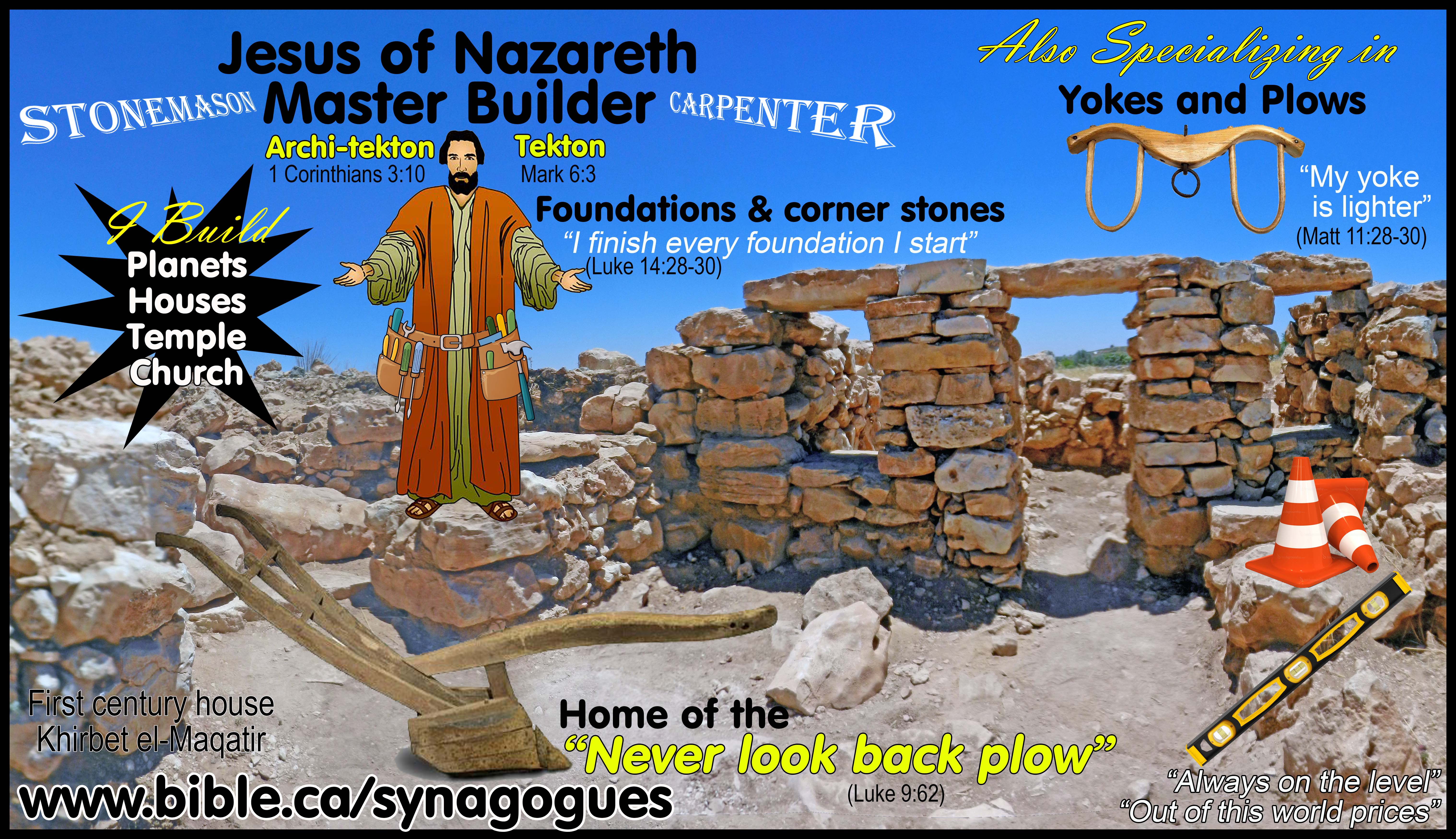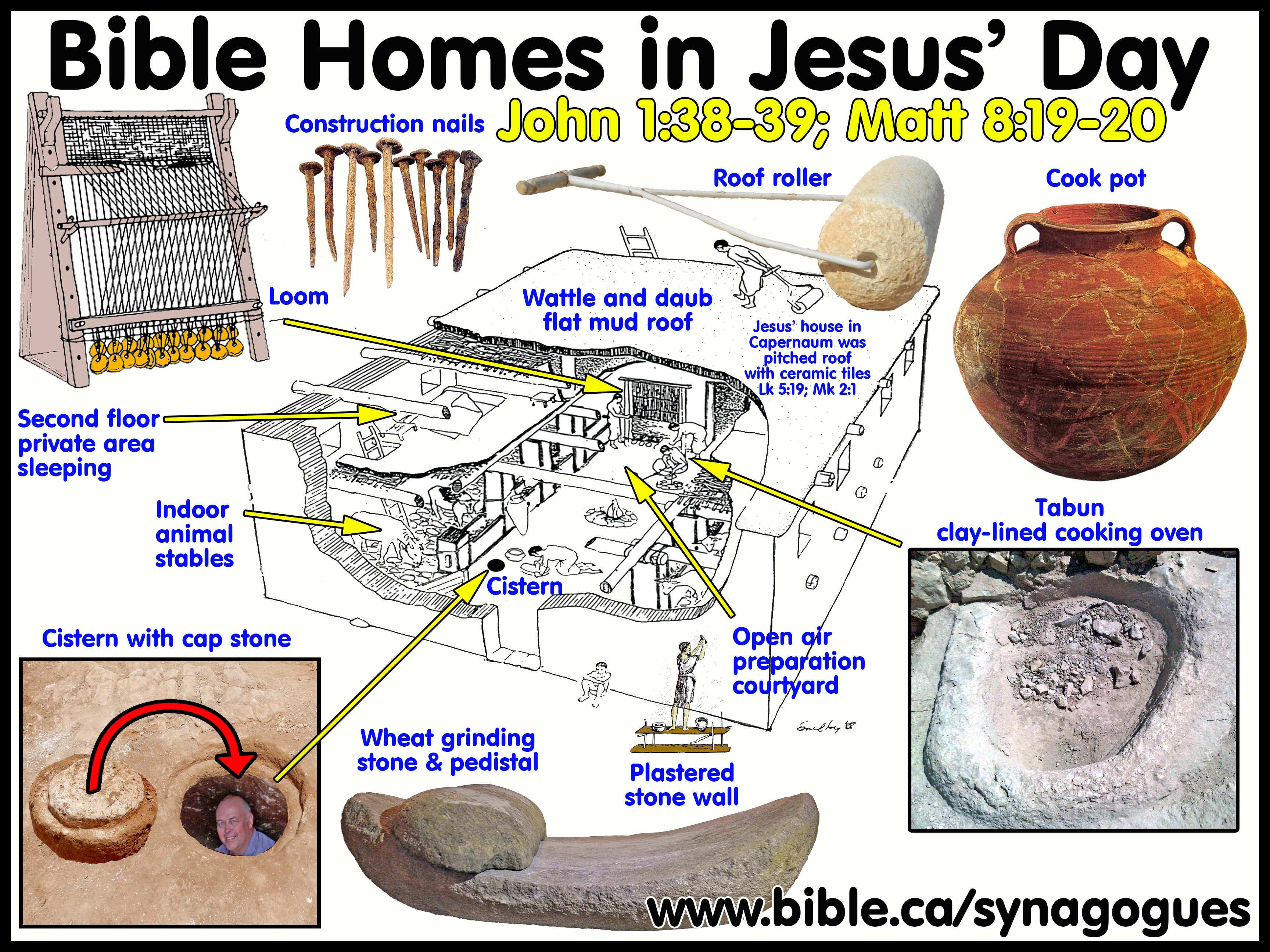|
Hostels, Housing, Food Banks and Appendages in Synagogues First Century Synagogues and churches |
“On this Rock, I will build My church”
Ancient Synagogue Worship and the Church
Synagogue worship was the prototype for Christian Church.
|
APPENDAGES, HOSTELS, HOUSING, FOOD BANKS IN SYNAGOGUES |
A. Appendages were buildings adjoining the main synagogue hall and date back to the earliest times:
1. Take a look at each of the ancient synagogue inscriptions and notice the different types of activities they did in their buildings that were adjoining the main synagogue worship hall.
2. “Assembly hall and town hall for the local Jewish congregation: As such, the synagogue served as a centre for community fund-raising, charitable collections, congregational affairs, and as a type of court of public interests (S. Safrai 1976:942). Levine (2000:19-41, 124-159; 2004:27-30) contends that "the synagogue of this period was primarily a communal institution serving the many and varied needs—including the religious ones—of the local community". These services included: social and political gatherings, religious instruction, Torah reading and prayer, collecting monies for the Temple and for local needs, communal meals, a hostel, as well as a local archive. Hostels are mentioned in rabbinic literature (Z. Safrai 1995:190-191). Adjoining institutions: These included schools and annexes with hostels, guest houses, and residences for synagogue officials. Sometimes ritual baths (miqvaoth) or water sources were built close by (see cistern or miqweh—at Barcam, Beth Shearim, Eshtemoca, Horvat Shenfa, Macon-Nirim, Macon Judea, Meiron, Na'aran, Susiya). At the New Moon or the end of the Sabbath, the synagogue or an adjacent room served as a dining room. Other civic activities and functions conducted in the synagogue: These included the courts and political assemblies, possibly treasuries, and the preservation of documents in a geniza. The court operated in the synagogue, originally as a local court and later, from the Amoraic period [200-500 AD], as a rabbinic court (Z. Safrai 1995:187-190). Levine (2000:370-372) maintains that the synagogue was used as a communal court and a place for administrating punishment and the manumission of slaves (see the Crimea inscriptions). The synagogue was also the usual location for the town officials. "The synagogue served as the office for the community administration" (Z. Safrai 1995:194-198).” (Ancient Synagogues - Archaeology and Art: New Discoveries and Current Research, Rachel Hachlili, p17, 2013 AD)
3. Hostels in Synagogues:
a. “Theodotos inscription in city of David Jerusalem: “Of singular importance in this inscription is the listing of three synagogue activities: reading the Torah, teaching the commandments, and providing rooms and water for itinerant pilgrims. Whether the hostel services were intended only for Jews from Rome in the context of a Landsmannschaft or whether they were available to others as well is unknown.” (The Ancient Synagogue, Lee Levine, p58, 1999 AD)
b. Jerusalem Theodotus Synagogue Greek Inscription reads: "Theodotos, son of [or: of the family of] Vettenos, a priest and head of the synagogue, son of the head of the synagogue, who was also the son of the head of the synagogue, [re]built the synagogue for the reading of the Law and for the study of the precepts, as well as the hospice (hostel) and the chambers and the bathing-establishment, for lodging those who need them, from abroad; it (the synagogue) was founded by his ancestors and the elders and Simonides." (Theodotus Synagogue Inscription, 18 BC)
c.
“And from the perspective of Samuel, why recite the
sanctification prayer in the synagogue? To carry out the obligation of guests,
who eat, drink, and sleep in the synagogue.”
(Babylonian Talmud, b. Pesah. 10:1, I.5.F–G)
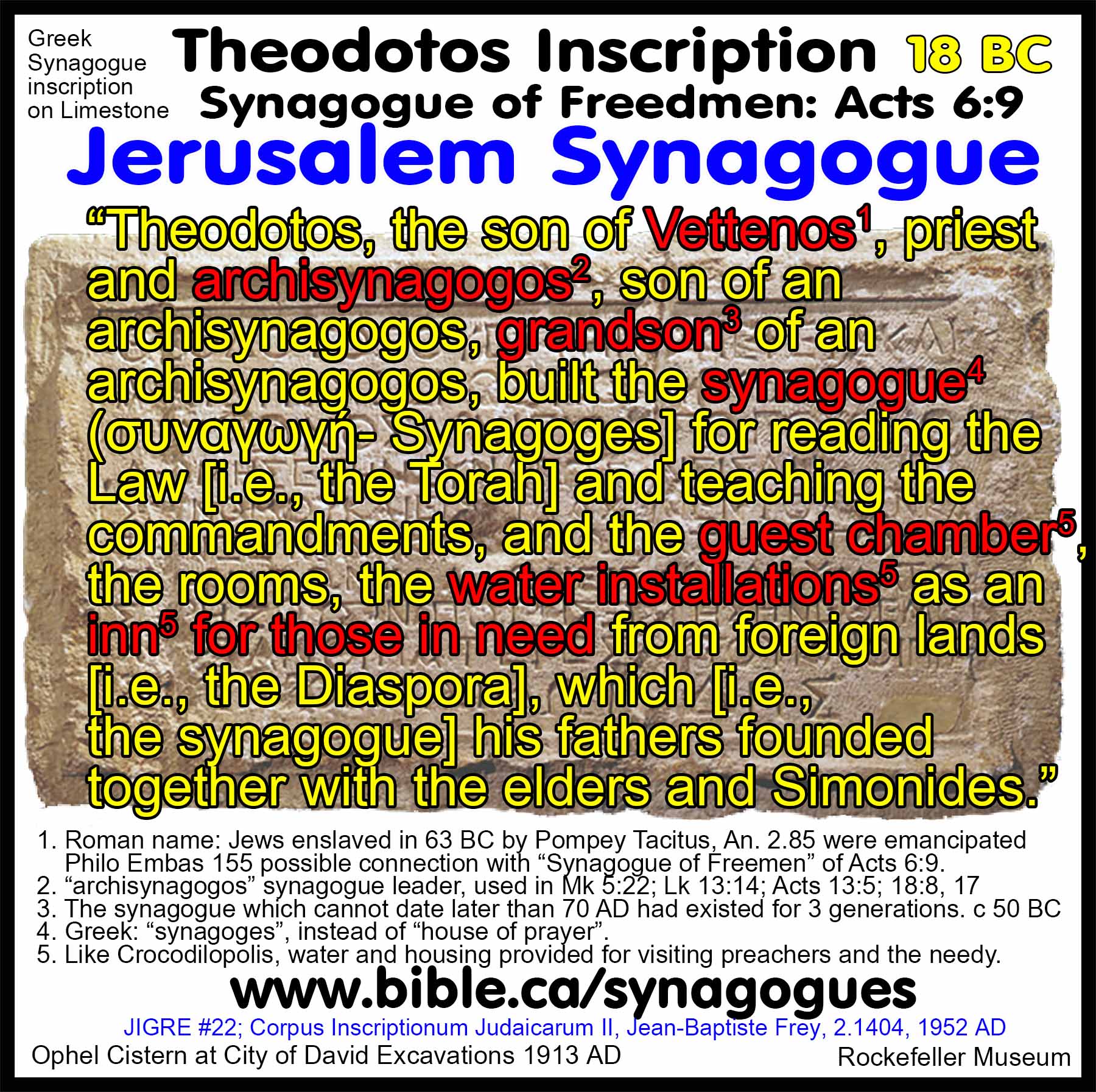
4. From the many ancient synagogue inscriptions, we can see that these side buildings and areas were:
a. Schools
b. Hostels for out of town travellers that provided food and shelter.
c. Courts
d. Treasury and document storage areas
e. Vegetable gardens to grow kosher food for sacred meals
f. On site kosher food storage for sacred meals
g. A residence for the gardener
h. A dovecote (columbarium) for communications via passenger pigeons.
i. Drinking water source installations.
B. Appendages in church buildings:
1. The church you can read about in the Bible used the synagogue as prototype to adopt most of these functions:
a. Church civic town hall meetings: Acts 6 and the neglected widows.
b. Food bank for needy widows (1 Tim 5) followed the ancient practice of special synagogue on site vegetable gardens to grow kosher food.
c. General housing and Hostels for travellers: The “manse” is wholly “church-owned” an adjoining building funded out of the church treasury for the preacher’s family and any out of town guests who visit. In the church of Christ, Elders often ask and expect the local preacher living in a church owned house next to the church building (manse) to allow visiting gospel preachers for gospel meetings (and their families) to stay with the preacher in the manse. Churches also routinely provide housing or pay for hotel accommodation of out of town gospel preachers doing a local meeting.
d. Civic Court to settle internal non-religious disputes over money matters etc. and decree punishments that fit the crime that range from restitution to floggings: 1 Cor 6
e. Eating of sacred communal meals: Lord’s Supper (unleavened grape juice, unleavened bread)
f. Public treasuries from weekly freewill donations: 1 Cor 16:1-2
g. Schools for religious education are in every church today: Adult class and classes for all ages of children are provided. Also specific mid-week “preacher training colleges with free tuition are run in many churches.
h. Asylum and sanctuary status exists even today in law for all the churches of Christ, even if they are unwilling to take advantage of this 2300 year old tradition granted to synagogues by Antiochus III and renewed countless times up to Roman times.
i. Administrative offices are located in most church buildings including a preacher’s office and separate secretarial offices for general administration.
j. Communication systems like phones, internet is derived from synagogues having an on site columbarium to house passenger pigeons.
k. Specific and separate storage area for scripture and important church related documents.
l. Source of water from city pipes traces its origin back to ancient synagogues being located near water sources, cisterns and wells.
m. The church Baptistry followed the pattern that every synagogue had a mikveh.
2. These many specific functions do not authorize many forbidden church activities and unscriptural uses of church treasury funds:
a. UNAUTHORIZED AND FORBIDDEN: Widow and orphan Homes: While the individual is mandated to help both, the church is forbidden from helping widows who are non-Christians. Paul instructed the church to supply food or money to widows, not housing.
b. UNAUTHORIZED AND FORBIDDEN: Members only Bowling alleys, fitness gymnasiums equipped with weights and cardio equipment, pot luck kitchens/banquet halls for secular parties, daycare, etc.
c. The church has no scriptural authority to use money form the church treasury for the social needs of members.
d. Ancient synagogues were never used for secular purposes and early churches followed this pattern.
3. Secular meals in the church building forbidden: 1 Corinthians 11:20-34
a. "Therefore when you meet together, it is not to eat the Lord’s Supper, for in your eating each one takes his own supper first; and one is hungry and another is drunk. What! Do you not have houses in which to eat and drink? Or do you despise the church of God and shame those who have nothing? What shall I say to you? Shall I praise you? In this I will not praise you. … "So then, my brethren, when you come together to eat, wait for one another. If anyone is hungry, let him eat at home, so that you will not come together for judgment. The remaining matters I will arrange when I come." (1 Corinthians 11:20-34)
b. The Jewish Mishnah and Talmud both do not allow common meals eaten in the synagogues.
c. For expanded discussion about church pot lucks being forbidden in the church see section on “Sacred meals in synagogues”.
4.
Early byzantine churches had a preacher’s manse, agricultural gardens
for food production for the preacher, storage areas and guest houses for out of
town travellers. The author spent several years excavating the Byzantine church
at Khirbet el-Maqatir (biblical Ephraim of John 11) that dates to 375 AD and
was destroyed in the earthquake of 749 AD. See the section on architecture.
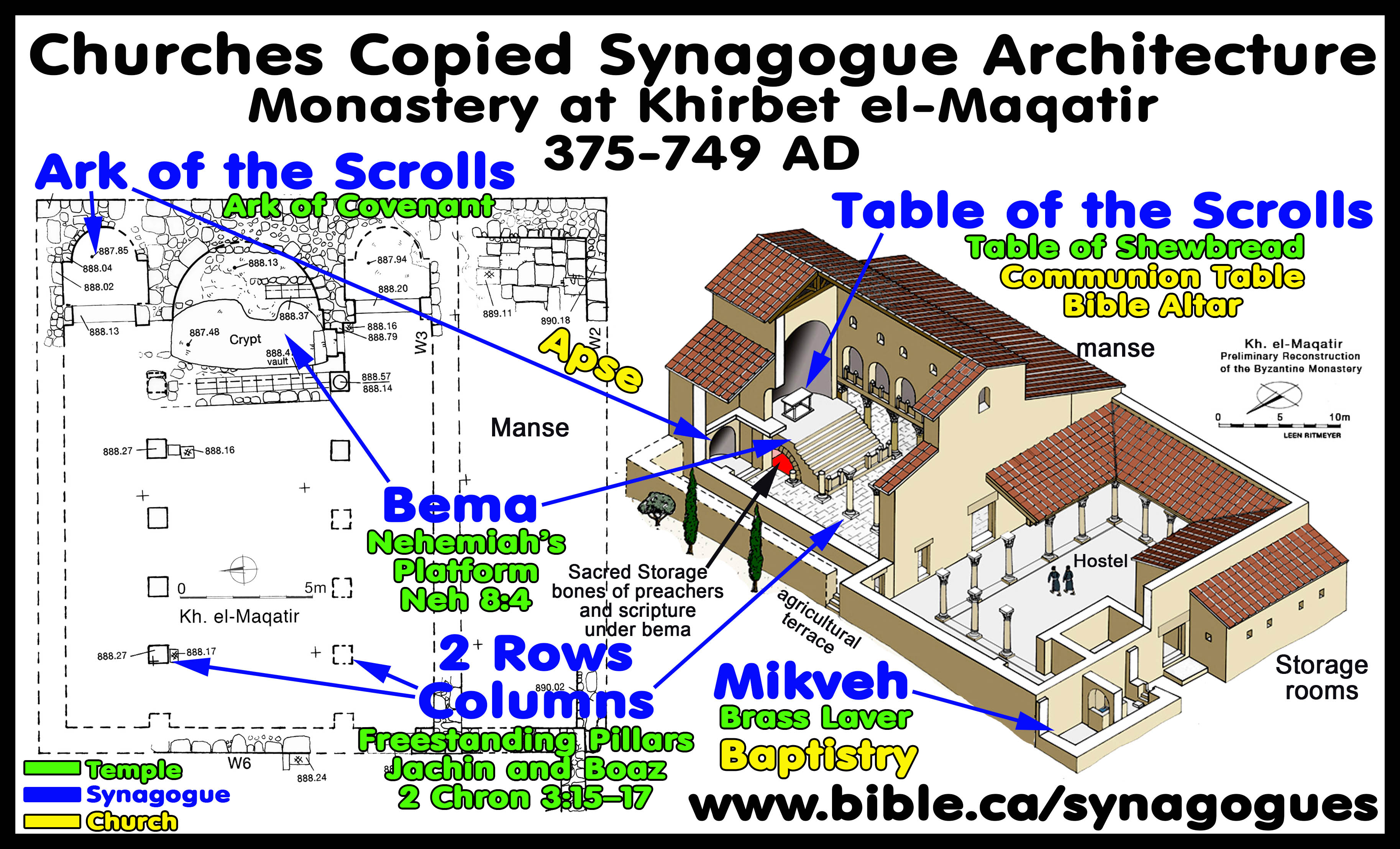
C. Application for the church today:
1. Its ok for the church to have a food bank for benevolence, as long as it is for Christians only and widows who meet the strict criteria of 1 Tim 5. If you want to help non-Christian widows, sell your house and give them the money or start a privately funded old folks home.
2. Its ok the church to run a hostile for visiting out of town Christians and preachers for gospel meetings but its not ok to start a hotel that charges discounted rates to random European backpackers travelling the world for fun. Many churches have church owned manses.
3. Its ok for the church to have storage buildings for scripture, books, bible libraries but its not ok to start a public “U-Store It” business. Most churches have libraries and storage rooms.
4. Its ok for the church to have civic style meetings for non-spiritual matters that directly relate to Christians (Acts 6), but its not ok to allow outside civic governments to use the church as a polling station for modern elections or all candidates meetings for city mayor. Disputing local members will often meet with the elders at the church building to resolve civic disputes.
5. Its ok for the church to get members to donate household goods and clothing for other local needy members, but its not ok to start a public thrift store that accepts donations from non-Christians to resell the goods for profit that is used to fund the construction of new church buildings or missionaries oversees or Bibles.
6. Its ok for a church to have a fridge and stone in the church building as long at it is used exclusively to bake the communion unleavened bread and keep the grape juice cold so it doesn’t spoil. Most churches have a fridge to store the Lord’s supper elements.
7. Its ok for money from the church treasury to be given to for occasional “one time needs” of any Christian anywhere, but it never ok to give a single dollar to any non-Christian from the church treasury. Churches regularly give money for medical emergencies of members.
8. Its ok for one church to send money to another church oversees to help the local Christians recover from disaster relief, it is not ok for any church to give money to the red cross or any generic relief agency. Christians are free to donate privately to the Red Cross.
9. Its ok for one church to send money to another recipient church where members are in need of humanitarian relief, but its not ok to send the money to rebuild African towns, build secular schools and provide medical aid for non-Christians. Benevolence from the church treasury cannot be used to support non-Christians the same way Jews only gave their benevolence to fellow needy Jews.
10. Its ok for a larger wealthy church to send money to a smaller needy church but its never ok for many smaller churches to send money to one larger and more wealthy “sponsoring church” that has much more money in its own church treasury, than all the smaller churches. A small “poorer” church sending money to a larger “richer” church is directly opposite to the New Testament pattern, without scriptural authority and always wrong regardless of the “greater good” being done.
11. Its ok for a local church to spend money for evangelism but its never ok for many smaller churches to send their money a larger “sponsoring church” to create a pool of money to run a multimillion dollar national evangelism program on behalf of the many church churches. This is a violation of autonomy and is without any Bible authority.
12. Its ok for the church to have a full government certified kitchen, complete with halon fire extinguishing system, as long as the only food they prepare is the unleavened bread and grape juice for communion or qualified widows as per 1 Tim 5. While such a kitchen may be authorized, all would agree it is an outrageous waste of the Lord’s money which could be spent in other areas. However, a congregation of 10,000 Christians would likely save time and money by having a large church kitchen with multiple ovens to bake the unleavened bread and bunker style fridges to store the grape juice and commercial dishwashers for washing communion cups for the for weekly communion.
13. Its ok for the church to gather for meals, as long as all the members already ate at home and are not hungry before they arrive to eat the Lord’s Supper. While synagogues gathered three times a year for sacred “full meals” of lamb that satisfied hunger, such was outlawed by the Holy Spirit in the church.
14. Its ok for a the church to install a passenger pigeon coop for communications, but today, its probably better to install phones in the offices and the internet at the pulpit, given it is much faster and way less messy.
15. Its ok to dig a well and install a drinking water fountain in the church building for members but its not ok for a church to install clean drinking water wells for non-Christians in third world towns that are dying from thirst. If you really care, you are free to sell your house, fly over and save the town with your own personal money by digging local water wells.
16. Its ok for a church to run a fully accredited university, as long as it is “tuition free” and funded only through weekly freewill offerings of Christians Sunday morning and teaches only Bible classes.
17. Its ok for a church to install a mikveh (baptistry) but its not ok for a church to construct an Olympic size public swimming to attract outside young families to the Sunday services by offering midweek swimming lessons for half the going rate at other civic swimming pools. The church should not be in competition with the local YMCA in providing social needs of the local non-Christian community.
By Steve Rudd 2017: Contact the author for comments, input or corrections
|
Jesus your messiah is waiting for you to come home! |
|
|
Why not worship with a first century New Testament church near you, that has the same look and feel as the Jewish Synagogue in your own home town. As a Jew, you will find the transition as easy today as it was for the tens of thousands of your forefathers living in Jerusalem 2000 years ago when they believed in Jesus the Nazarene (the branch) as their messiah. It’s time to come home! |
|
By Steve Rudd: Contact the author for comments, input or corrections.
Go to: Main Ancient Synagogue Start Page
